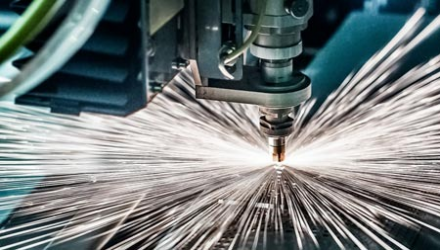Technology

Trends and Forecast for Laser Cutting Machines in 2030
Trends and Forecast for Laser Cutting Machines in 2030
• High Power and Precision Laser Technology:
By 2030, laser cutting machines are expected to advance towards higher power and precision. High-power lasers will be capable of cutting thicker materials while maintaining high precision, catering to increasing demands in industries such as aerospace, heavy machinery, and shipbuilding. Additionally, ultra-high precision cutting technologies will be applied in microelectronics and medical devices, supporting intricate processing.
• Automation and Intelligence:
Automation and smart capabilities of laser cutting machines will significantly improve by 2030. AI-equipped laser cutting systems will automatically optimize cutting paths, inspect material quality, and adjust cutting parameters to achieve optimal efficiency and quality. Driven by Industry 4.0, these machines will be deeply integrated into smart manufacturing systems, leveraging IoT for remote monitoring and maintenance to enhance production flexibility and reliability.
• Energy Efficiency and Sustainability:
With global emphasis on carbon emissions control and environmental regulations, laser cutting machines in 2030 will focus on energy efficiency and sustainability. Next-generation laser technologies will use less energy and reduce heat loss. High-efficiency solid-state lasers, such as fiber lasers, will become mainstream due to their superior energy efficiency compared to traditional CO2 lasers and their lower environmental impact.
• Multi-Material Cutting Capabilities:
By 2030, laser cutting technology will extend beyond metal cutting to include a variety of materials such as composites, ceramics, glass, and plastics. Multi-functional laser cutting machines will handle diverse materials, meeting the needs of various industries and enhancing manufacturing flexibility and productivity.
• Integration with Additive Manufacturing:
With the rise of 3D printing (additive manufacturing), laser technology will be increasingly integrated with additive manufacturing processes. By 2030, laser cutting machines will work in tandem with additive manufacturing equipment on the same platform, significantly boosting flexibility and efficiency in manufacturing processes.
• Market Growth and Regional Distribution:
The laser cutting machine market is expected to continue growing, particularly in Asia, with significant demand in manufacturing powerhouses like China and India. These regions' manufacturing transformations and upgrades will drive widespread adoption of laser cutting technology. Meanwhile, the European and North American markets will remain focused on high-precision, high-efficiency laser technologies, leading advancements in automation and smart manufacturing.
Overall, laser cutting machines in 2030 will lead manufacturing innovation with greater precision, lower energy consumption, smarter automation features, and broader application ranges.